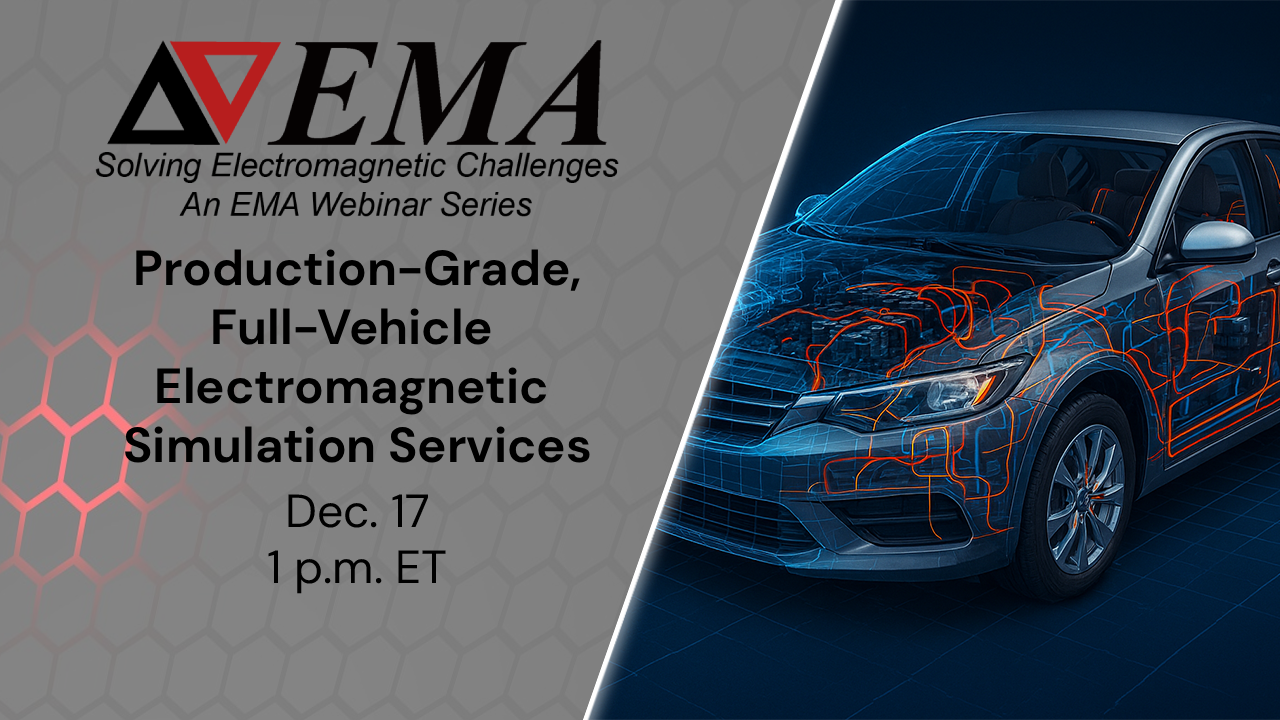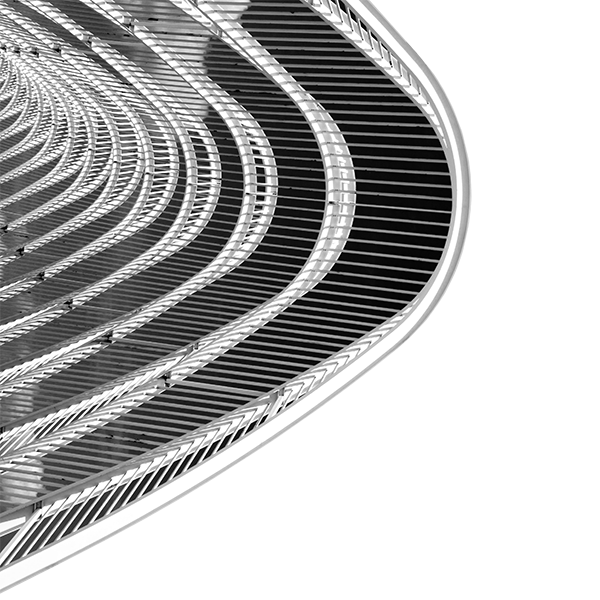
Webinars

Take part in EMA’s Solving Electromagnetic Challenges webinar series, where you will learn how to overcome the most pressing issues in the industry. Whether it's adapting to new standards, adopting new technologies and methodologies, or optimizing your designs and workflows, Solving Electromagnetic Challenges will give you the edge you need to succeed.
Our next webinar is Wednesday, Dec. 17, 2025
Production-Grade, Full-Vehicle Electromagnetic Simulation Services

Modern vehicles, whether aircraft, automobiles, industrial systems, or oil and gas platforms, are more electrically complex than ever. Ensuring safe, reliable performance across all electromagnetic environments requires a level of modeling fidelity that most organizations cannot build in-house. EMA’s Services Team offers a unique, production-ready solution: creation of a full-fidelity digital twin of your vehicle, including its complete mechanical geometry, material stack-ups, and full Electrical Wiring Interconnect System (EWIS). Using your Mechanical CAD, material properties, and wiring data, EMA engineers develop a simulation-ready model with rigorous configuration control across every element.
This digital twin is built by the EMA Services Team using EMC Plus, the commercial simulation product we develop and rely on for high-fidelity analysis. Only EMA and EMC Plus together can create and solve system-level models with thousands of cables and all related structures, enabling accurate predictions of emissions, immunity or susceptibility, E3 (electromagnetic environmental effects), and RF interactions. This is not a one-off R&D effort. It is a true production capability designed to keep pace with real design cycles, providing a model that is ready when you need it and robust enough to support repeated use across evolving product designs. With EMA, engineering organizations gain the ability to predict real product performance with a complete, simulation-ready vehicle model that captures all the electromagnetic and structural complexity required for modern programs.
This webinar will show how EMA’s modeling services deliver unmatched fidelity, scalability, and repeatability for complex vehicles, and why this is the only viable path to a complete, high-accuracy electromagnetic digital twin.
Join us on Dec. 17 at 1 p.m. ET. Click here to get registered.

Speaker: Tim McDonald
EMA Co-CEO
Tim McDonald, PhD is Co-CEO at EMA. He is a leading expert in electromagnetic modeling and simulation, specializing in multiphysics solutions for EMC, power systems, and space environments. As a key contributor at EMA, Inc., he drives innovation in computational electromagnetics, developing advanced techniques for interference analysis, plasma physics, and high-power effects. With extensive experience in EMC Plus and Charge Plus, Tim has helped engineers tackle complex challenges in aerospace, energy, and manufacturing. He is passionate about bridging the gap between ease of use and high-fidelity physics, enabling engineers to model real-world electromagnetic interactions with confidence. Tim regularly presents at industry conferences, sharing insights into the latest advances in simulation and design optimization.
View our previous webinars here:









